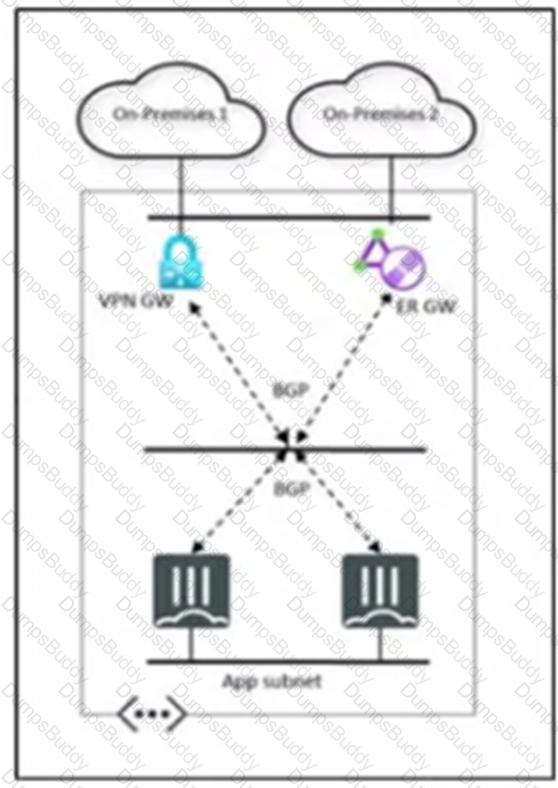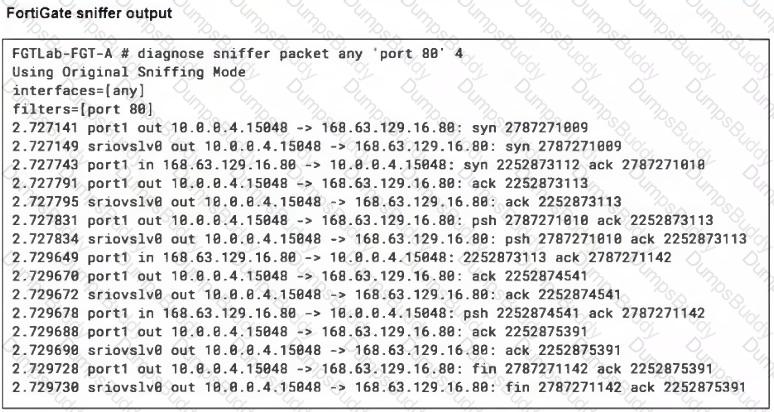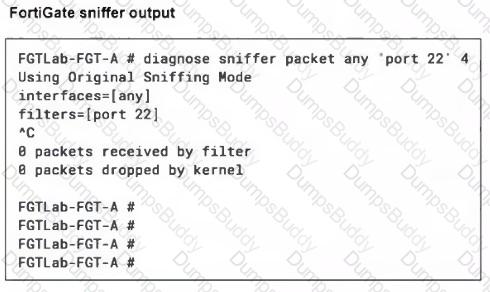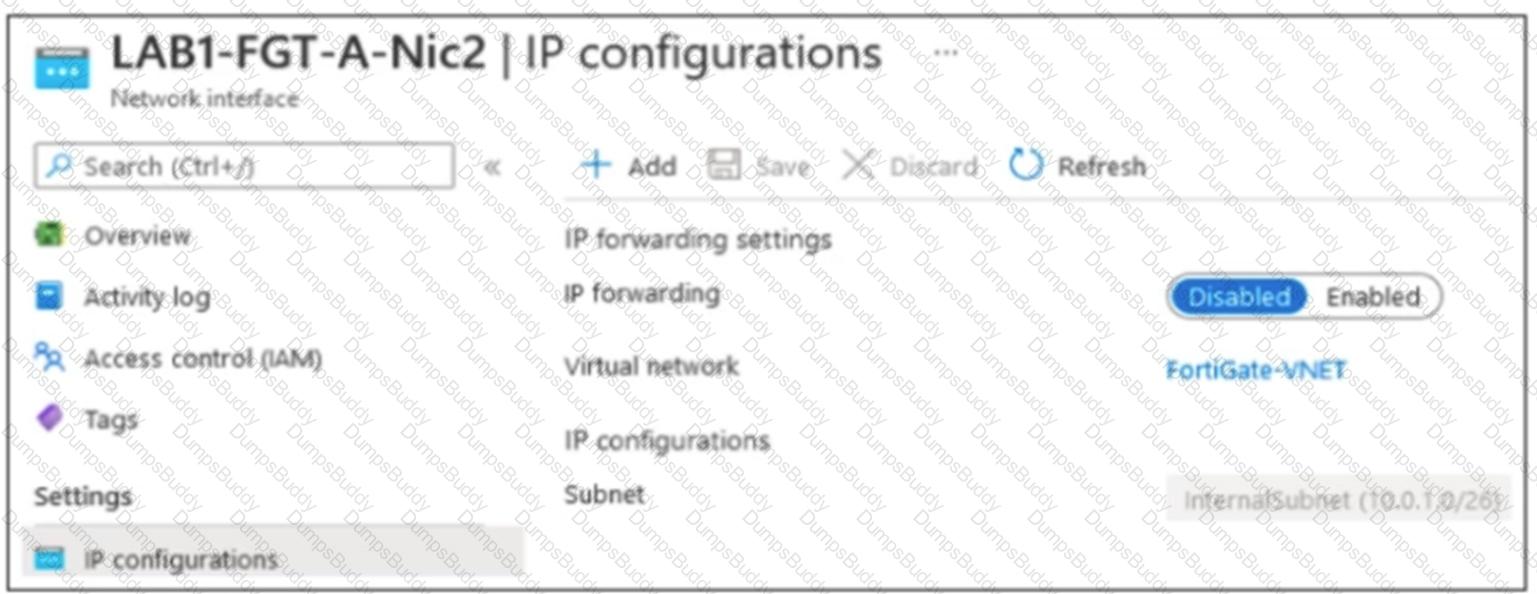Refer to the exhibit.

In an expanding corporation, the different branches share resources connecting to Azure through Azure VPN Gateway and ExpressRoute Gateway.
Which Azure solution can you implement to simplify and centralize the seamless sharing of the dynamic routing between FortiGate VMs and branches?
Refer to the exhibit.

Your company runs front-end web servers in Azure. You need to deploy a Linux VM to be used as a web server.
To protect your web servers with a web application firewall (WAF), you deploy FortiWeb to secure applications from web-based attacks.
Which FortiWeb operation mode can you implement for this scenario?
You are deploying a site-to-site IPsec VPN connection between your on-premise subnet and your Azure VNets.
What is the most important advantage for using FortiGate at both ends of the tunnel?
Refer to the exhibits.


A high availability (HA) active-active FortiGate with Elastic Load Balancing (ELB) and Internal Load Balancing (ILB) was deployed with a default setup to filter traffic to a Linux server running Apache server.
Ports 80 and 22 are open on the Linux server, and on FortiGate a VIP and firewall policy are configured to allow traffic through ports 80 and 22. Traffic on port 80 is successful, but traffic on port 22 is not detected by FortiGate.
What configuration changes could you perform to allow SSH traffic?
What is a requirement when you deploy a FortiGate active-active cluster in Azure?
Refer to the exhibit.

The exhibit shows some of the properties of a virtual NIC that is used by a FortiGate VM deployed in Azure.
The virtual NIC shown is connected to a subnet (10.0.1.0/26) with several VMs that will be accessing the internet through the FortiGate VM.
Which statement is true for this scenario?